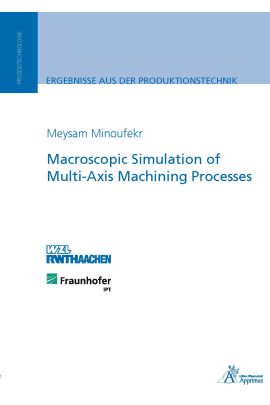The planning and design of multi-axis machining in modern day manufacturing is characterized by time-consuming correction loops. On the one hand, process ramp-up requires additional planning steps such as the identification of stable and optimum process parameters and on the other hand, an evaluation of the achieved product quality. Simulation tools are used to reduce the effort and therefore the costs of designing NC milling processes within the process chain. In addition, processes can be checked in detail in a virtual simulation environment to identify potential problems before their physical implementation.
By using the simulation model introduced in this research, the macroscopic parameters are calculated for the entire NC machining process. These macroscopic parameters geometrically describe tool/workpiece engagement and correlate to mechanical and thermal stresses on the tool. Based on the calculation of the macroscopic parameters, machining process can be designed by reducing the tool load along the multi-axis toolpath. This can significantly increase the tool life of the milling cutters, which results in increased process robustness and efficiency, thereby reducing used resources.
Integrating the macroscopic engagement simulation into the computer-aided design of multi-axis machining processes represents great potential for systematic optimization. Computational complexity is decreased due to efficient geometrical algorithms, while at the same time, becomes easier to access significant process knowledge. This leads to a significant increase in process safety and efficiency in process design.
| Autor | Minoufekr, Meysam |
|---|---|
| Lieferzeit | 3-4 Tage |
| Gewicht | 0.22 kg |
| Erscheinungsdatum | 05.05.2015 |

